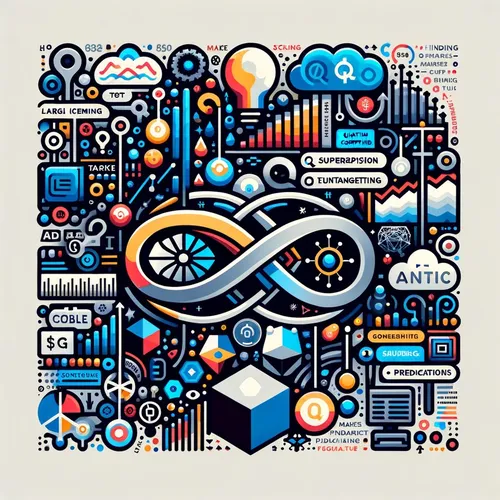IBM and AMD Quantum Leap: Hybrid Supercomputers to Revolutionize Drug Discovery, Logistics, and Beyond
- Author
- Quiet. Please
- Published
- Fri 29 Aug 2025
- Episode Link
- https://www.spreaker.com/episode/ibm-and-amd-quantum-leap-hybrid-supercomputers-to-revolutionize-drug-discovery-logistics-and-beyond--67553909
This is your Quantum Market Watch podcast.
This is Leo, the Learning Enhanced Operator, and today—August 29th, 2025—I'm bringing the quantum pulse right to your ears. No long intro, just a direct infusion of the biggest quantum story shaking the market: IBM and AMD have announced a transformative partnership to engineer hybrid quantum-classical supercomputers. Yes, you heard it—“quantum-centric supercomputing.” This isn’t just a technical tweak, folks. It’s the dawn of a new computational era, and the ripple effects across industries are already starting to take shape.
Imagine a fusion reactor humming in silicon, where quantum bits—those shimmering threads of possibility—dance alongside the relentless rhythm of classical CPUs and GPUs. Arvind Krishna of IBM put it best: by integrating quantum processors with AMD’s high-performance accelerators, we’ll “push past the limits of traditional computing.” Lisa Su, AMD’s CEO, echoed that with talk of “accelerating discovery and innovation.” What does this mean for the industry? Let’s zero in.
First, let’s paint a picture with molecules. Right now, drug discovery stands on the edge of a quantum cliff. Classical computing can simulate simple reactions, but biological puzzles—protein folding and molecular interactions—are a blur of uncertainty, too complex for existing hardware. That’s where quantum-centric supercomputers step in, harnessing qubits to simulate atoms and molecules with unprecedented accuracy. The drug pipeline could shrink from years to mere months, and personalized medicine moves from speculation to implementation as quantum algorithms map and optimize chemical structures in real time.
Materials science—a field obsessed with the arrangement and interaction of atoms—will see a similar jolt. Think new battery chemistries, unbreakable alloys, and superconductors engineered for the grid. In logistics and optimization, these hybrid machines can crunch data flows that shift by the millisecond, finding optimal routes and schedules for supply chains that still, today, struggle with incomplete information and bad approximations.
The drama doesn’t stop at theory. IBM and AMD plan to run their first demonstration this year, leveraging open-source developments—Qiskit, for example—to deploy workflows no single paradigm could handle alone. Fault tolerance and real-time error correction, key elements for reliable quantum computing, will be powered by AMD tech, bringing us closer to a future where error-prone qubits can be stabilised long enough for real economic impact.
Here in my lab, surrounded by the ghostly glow of dilution refrigerators and curled power lines, I watch the patterns of quantum entanglement unfold like the stock market’s chaos—correlated, random, infinitely nuanced. The synthesis of quantum and classical approaches is a metaphor for the market itself: volatile, unpredictable, and—if you have the right insight—unbelievably powerful.
This week’s announcement is a quantum leap, and every listener—whether you’re managing a portfolio or simulating a genome—should see how the converging storylines will shape innovation in pharma, logistics, AI, and beyond.
Thanks for tuning in to Quantum Market Watch. Questions, topics—send them my way at [email protected]. Don’t forget to subscribe, and remember, this is a Quiet Please Production. For more, check out quietplease.ai. Until next time, keep your eyes on the quantum horizon.
For more http://www.quietplease.ai
Get the best deals https://amzn.to/3ODvOta
